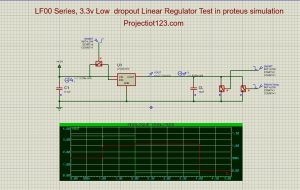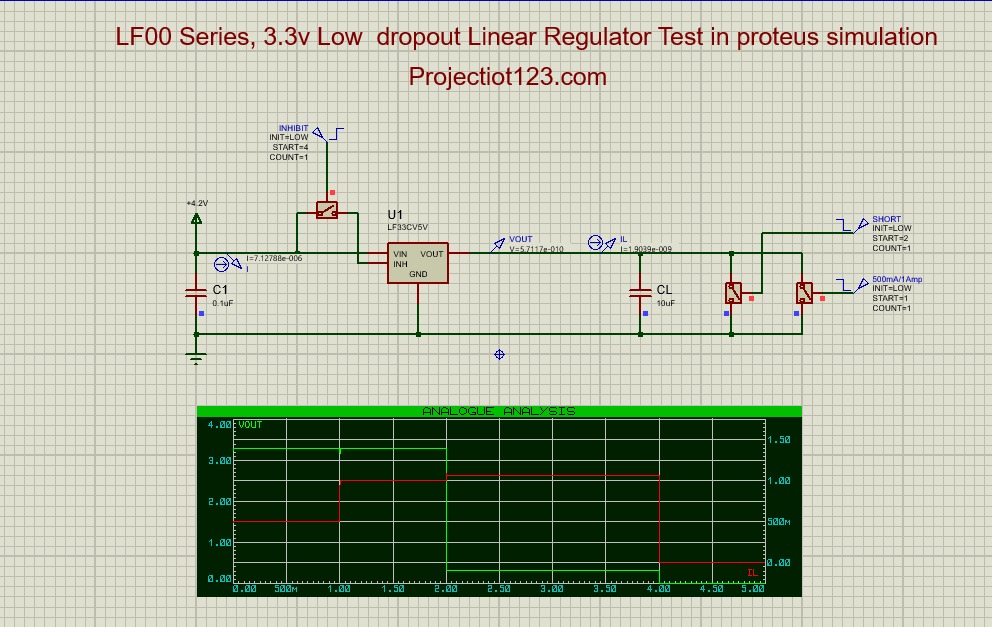LF00 series with 3.3V Low dropout Linear Regulator test in proteus
LF00 series with 3.3V Low dropout Linear Regulator test in proteus
In this article we will learn how to Interface LF00 Series with 3.3V Low dropout Linear Regulator in proteus.
In the last post we will learn how to Interface L4970 with 10A power supply in proteus. You can visit our website,
I hope you appreciate my work, let’s discuss about today’s project.
Components which we use in this project are listed below:
- Regulator (LF33CV5V)
- Switch
- Capacitor (0.1uF)
- Capacitor (10uF)
- Jumper wires
Diagram of this project is below:

Construction of LF00 series with 3.3V Low dropout Linear Regulator in proteus
- Connect Vin pin of regulator with one side of capacitor 0.1uf and then connect them with +ve
- Connect INH pin of Regulator with one terminal of switch
- Connect base terminal with INHIBIT
- Connect 2nd terminal with junction of capacitor and Vin pin
- Connect GND pin of regulator with the GND
- Connect VOUT pin with one side of capacitor 10uF
- Connect 2nd side of 10uf with GND
- Connect one side of terminal with +ve side of 10uF through one side of another terminal
- Connect 2nd sides of terminals with GND
- Connect 2nd side of 0.1uF with GND
Working of LF00 series with 3.3V Low dropout Linear Regulator in proteus
A 3.3V Low Dropout Regulator (LDO) is a type of voltage regulator used to provide a stable output voltage of 3.3 volts from a higher input voltage while minimizing the dropout voltage.
Applications of LF00 series with 3.3V Low dropout Linear Regulator in proteus
- Microcontroller Power Supply
- Sensor Modules
- Wireless Communication Modules
- Analog Circuits
- Battery-Powered Devices
Advantages of LF00 series with 3.3V Low dropout Linear Regulator in proteus
- Low Dropout Voltage
- Low Output Noise
- Simplicity and Ease of Use
- Thermal Efficiency
- Protection Features

